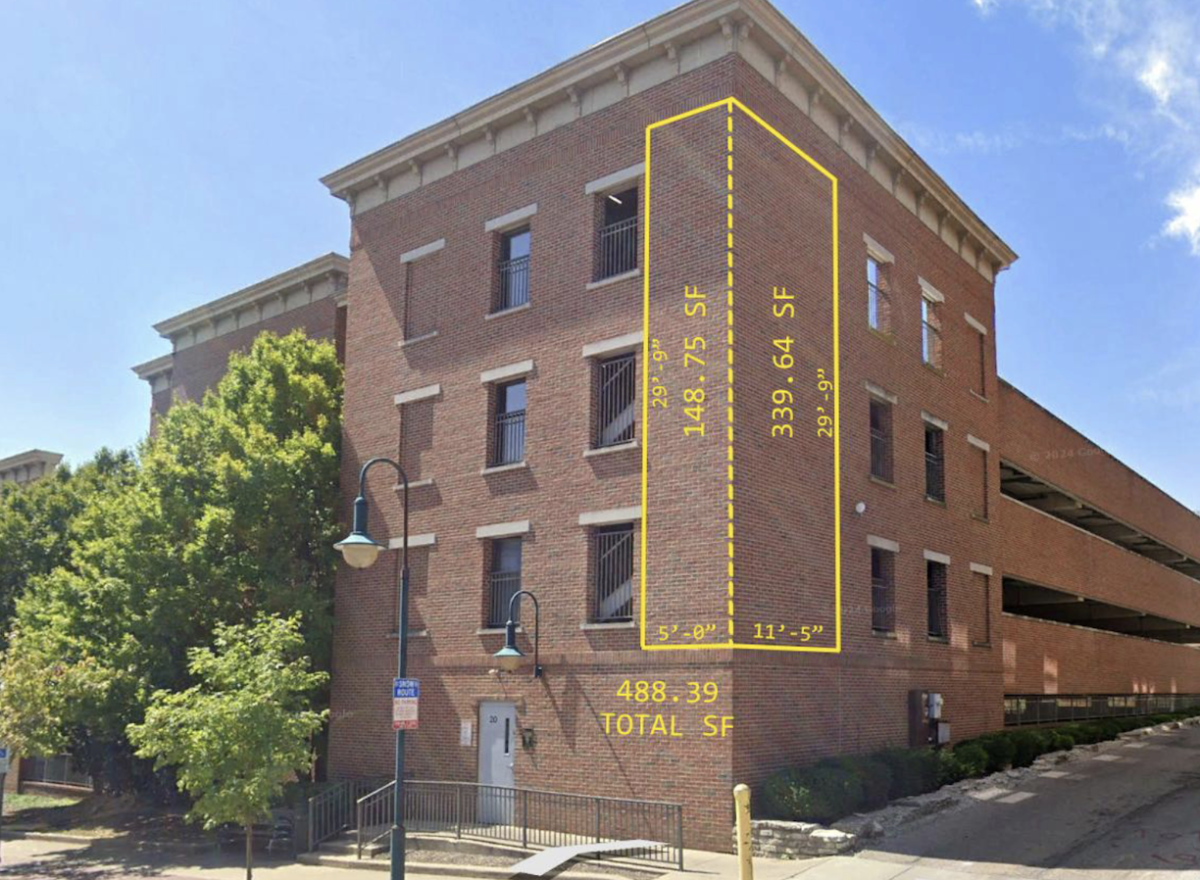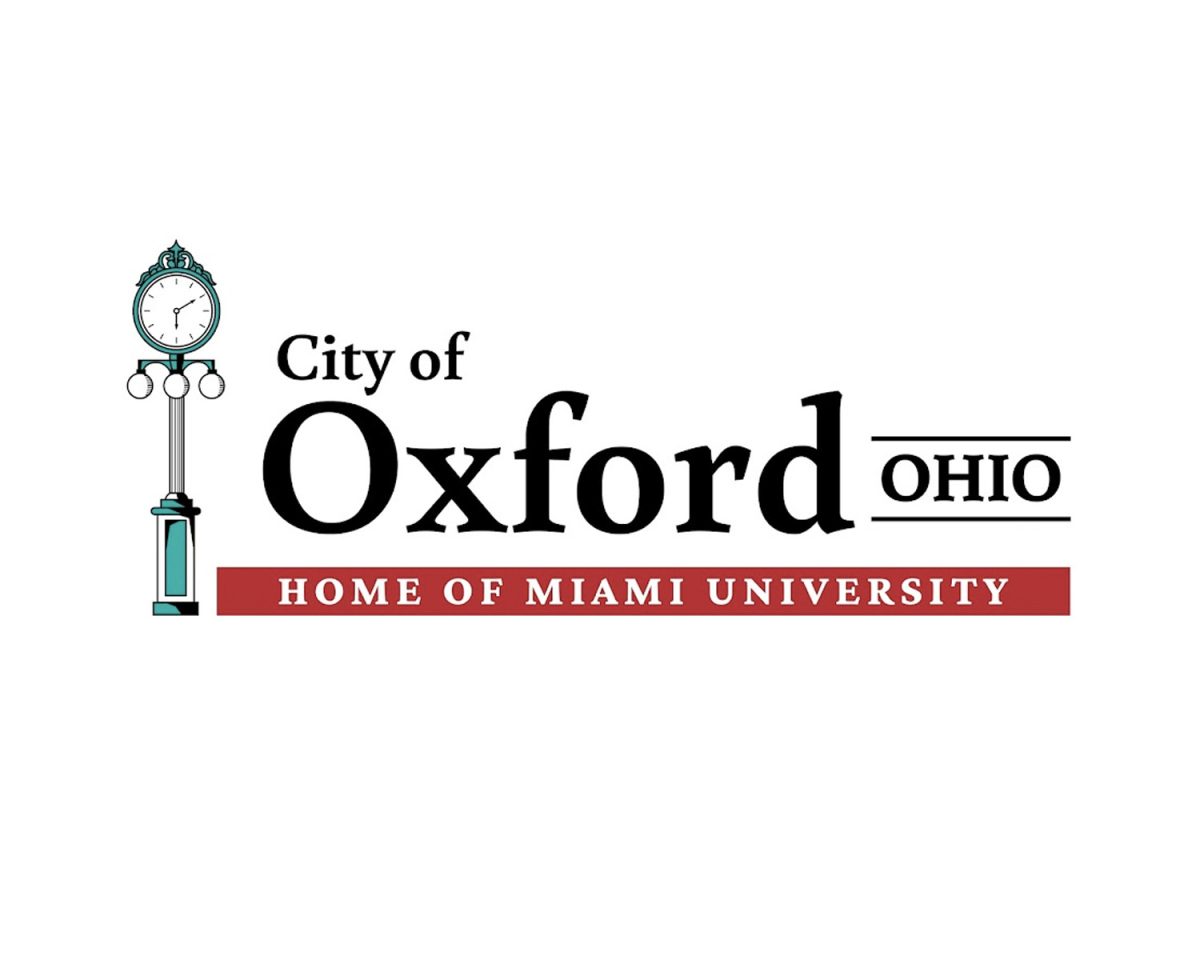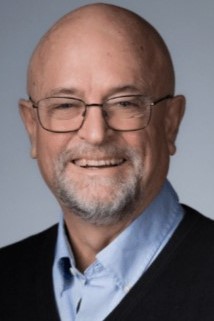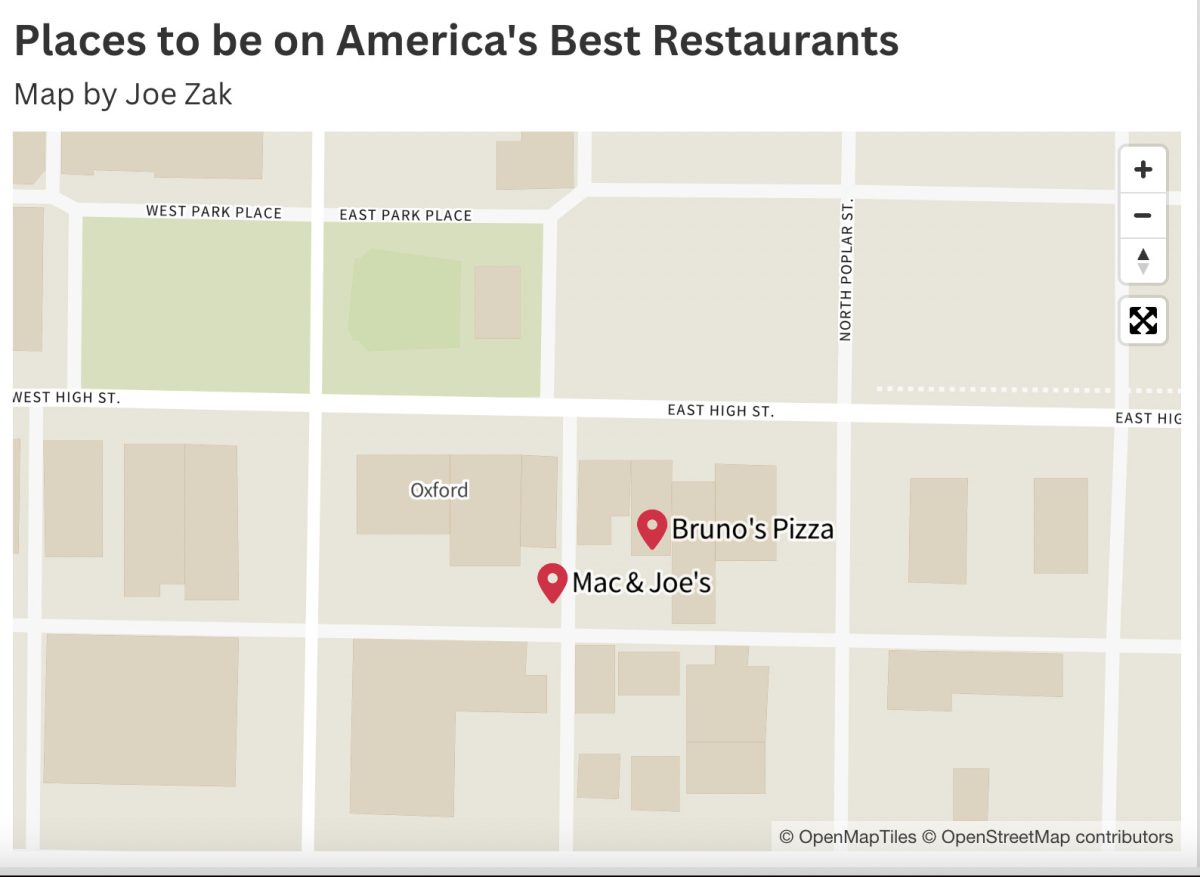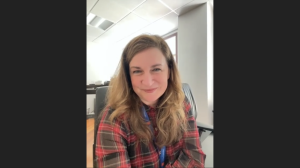Oxford plays host to Miami student film
See video inside
April 22, 2022
The City of Oxford is the central backdrop for a narrative fiction film shot entirely on location by graduating Miami University Seniors Patrick Guerreau and Bryce Mysona.
The pair spent much of their time before production navigating the proper channels to include a number of locations both uptown and on campus. Throughout the film, characters interact in Miami dorm rooms, classrooms, dining halls and Oxford locations such as Graeter’s Ice Cream and Uptown Park.
The movie, currently under the working title “The Long Distance,” is set to run well over an hour, making it their first feature-length project. Guerreau and Mysona are planning to hold their first test screening on campus Friday, May 6, though they are still seeking a venue.
In addition, they intend to spend the summer submitting the project to several film festivals around the world, where they hope it will have a wider release and become more available to the public.
Mysona and Guerreau, now in the final stages of post-production, had amassed plenty of production experience. By the time Guerreau finished writing his script, they had never worked outside of a classroom setting at such a scale.
In their film, Carl (Justin Bourne) drives seven hours to a college campus to visit his girlfriend (Emerson Adams), only to have their reunion cut short when she unceremoniously breaks up with him. Left a stranger in unfamiliar territory, he finds himself pulled every which way by a cast of eccentric supporting characters who both help and hinder him.
Guerreau, the film director, describes its “episodic” structure as a conscious decision he made to accommodate the constraints of conflicting classroom schedules and a skeleton crew. While they’ve spent their spring semesters fully immersed in post-production, shooting took place over a couple weeks in the fall. In other words, there was little room for flexibility or rescheduling.
“(With) all of the supporting characters, it was like ‘alright, come in, we’ll shoot your scenes in a day, maybe two, and then you’re done’” Guerreau said. “So, schedules were a lot easier to align than they would have been if we had [multiple] people from start to finish in the whole film.”
Considering their skeleton crew, the two repeatedly indicated that the incredibly daunting task of production was made significantly more manageable due to tremendous support both from Miami’s faculty and Oxford’s community members.
In particular, he and Mysona, the film’s director of photography, remembered a fortunate and timely encounter with Oxford Township Police Officer Jeff King who expressed interest in playing the cop in their film, also conveniently providing many of his own props.
“This was two weeks before we started production,” Guerreau said. “That was just a miracle.”
Mysona agreed, adding that the resolution of that particular casting issue was representative of a production full of happy accidents in which “the stars aligned.”
In another incident, the two were a day out from a scene that called for a second cop. In desperation, Guerreau contacted one of his film professors, Oxford resident Andy Rice, who agreed to spend a Saturday morning memorizing and reciting a handful of lines.
This gesture of support was especially significant by Rice, who had been spending time with the pair and offering them advice on how to navigate the colossal project. Guerreau remembered that his initial interaction with Rice about the film had come packaged with words of warning.
“He was like, ‘you will not eat, you will not sleep. This is probably just too big for your own good.’” Guerreau said. “And, you know, maybe he had a point there.”
However, the pair’s success is also indebted to the emergence of increasingly capable digital technology that has opened the doors for independent filmmakers to push aesthetic and technical boundaries without straining their resources.
“This is basically no-budget territory, which you can do in today’s day and age,” Guerreau said. “Everyone has cameras. We’re editing on DaVinci Resolve, which is free. You have all these resources that people maybe even 10 or 20 years ago would not have had as easy access to. I think we’ve even impressed ourselves with what we were able to do.”
While they both expressed their technical literacy had skyrocketed as a result of this project, Mysona pointed to a more interior sense of accomplishment. He stated that the finished product had an emotional core that made it more than the sum of its practical and mechanical parts.
“I’d like people to watch it and think ‘I just watched a movie’ instead of ‘I just watched this kid’s project,’” Mysona said. “And I think [the film’s story] has a certain relatability that I hope some people take out of it as well.”



